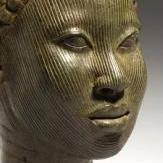Introduction

Did you know that while ancient Egypt often steals the limelight, the Nubian kingdoms flourished with their own majestic empires and rich cultural heritage? Nestled along the Nile in present-day Sudan and southern Egypt, these civilizations played a vital role in shaping Africa’s ancient history. Despite their remarkable achievements, Nubia’s story remains underrepresented in mainstream history. Let’s dive into the world of the Nubian kingdoms and uncover their incredible legacy.
Who Were the Nubians?
Nubians were the indigenous people of a region called Nubia, stretching along the Nile from Aswan in Egypt to Khartoum in Sudan. Known for their resilience, they thrived in one of the world’s harshest environments, transforming deserts into a cradle of civilization.
The Origins of Nubia
The roots of Nubia trace back over 6,000 years, long before the rise of pharaonic Egypt. Early Nubians were skilled farmers, cattle herders, and artisans. Their proximity to the Nile made agriculture a cornerstone of their survival.
Nubia’s Role as a Trade Hub
Nubia wasn’t just a kingdom; it was a crossroads for ancient trade routes. Its location bridged Africa and the Mediterranean, fostering a dynamic exchange of goods and culture.
The Wealth of Nubia
Gold, ivory, and exotic animals were abundant in Nubia. In fact, Nubia was often called the “Land of Gold.” This wealth attracted neighboring powers, including Egypt, eager to control its resources.
Cultural Exchanges with Egypt
The relationship between Nubia and Egypt was complex—sometimes cooperative, other times combative. While Egypt influenced Nubia, the latter also left its mark, blending customs and traditions that enriched both cultures.
The Kingdom of Kerma (2500–1500 BCE)
The first Nubian kingdom to achieve prominence was Kerma. Located in modern-day Sudan, Kerma was an advanced civilization that rivaled Egypt in power and sophistication.
Achievements of Kerma
Kerma’s rulers constructed grand palaces, temples, and burial mounds. Their pottery, considered some of the finest in the ancient world, showcased their artistic brilliance.
Military Prowess
Kerma was also a military powerhouse. Their armies not only defended their lands but occasionally pushed into Egyptian territory, demonstrating their strength.
The Rise of the Kingdom of Kush (1070 BCE–350 CE)
After the decline of Kerma, Nubia saw the rise of Kush, centered at Napata and later Meroë. Kush became a dominant force in Africa, even ruling Egypt during the 25th Dynasty.
The Napatan Period
During the Napatan period, Kushite kings adopted Egyptian customs and styled themselves as pharaohs. They built pyramids in Nubia, which, though smaller than those in Egypt, remain iconic symbols of their reign.
The Meroitic Period
Meroë, the second capital of Kush, became a hub of innovation. This period saw advancements in ironworking, writing systems, and architecture. Unlike the hieroglyphs of Egypt, the Meroitic script remains partially undeciphered.
Nubia’s Religious Significance
Religion played a central role in Nubian society. Their pantheon shared similarities with Egyptian deities but also featured unique gods.
Amun and Nubian Spirituality
Amun, a major deity in both Egypt and Nubia, held immense influence. Nubian rulers often claimed divine authority through their connection to Amun.
Temples and Sacred Sites
The Nubians built monumental temples, such as the Temple of Soleb and the temples of Meroë. These structures highlight their devotion and architectural prowess.
H1: Nubian Women: Pillars of Society
Nubian women held significant power, a rarity in ancient civilizations. They were queens, priestesses, and warriors, often wielding influence on par with men.
Also Read: Embracing Imperfections: The Path to a Happier Life
The Kandake Queens
Kandakes, or queen mothers, ruled Kush as sovereign leaders. Figures like Amanirenas defended Nubia against Roman incursions, showcasing their strength and leadership.
Nubia’s Decline and Legacy
No empire lasts forever, and Nubia was no exception. But its decline didn’t erase its influence or achievements.
The Fall of Kush
By 350 CE, the Kingdom of Kush fell to the Axumite Empire. Trade shifts and resource depletion likely contributed to its downfall.
Nubia’s Enduring Impact
Nubia’s legacy lives on in Sudanese culture and African history. Its art, architecture, and traditions continue to inspire.
Rediscovering Nubia in Modern Times
For centuries, Nubia was overshadowed by Egypt in historical narratives. However, modern archaeology is shedding light on its contributions.
Key Archaeological Discoveries
Sites like Kerma, Napata, and Meroë have revealed treasures ranging from royal tombs to intricate artifacts. These findings offer a deeper understanding of Nubia’s sophistication.
Nubia in Popular Culture
Recent efforts by historians and filmmakers are bringing Nubia into the spotlight, ensuring its story is heard.
Why Nubia Matters Today
Nubia’s story isn’t just about the past—it’s about recognizing Africa’s role in shaping human civilization.
Celebrating African Heritage
By uncovering Nubia’s history, we celebrate Africa’s rich and diverse heritage, challenging stereotypes and broadening our perspective on ancient achievements.
Conclusion
Nubia, with its powerful kingdoms, innovative achievements, and rich cultural legacy, deserves recognition as one of Africa’s oldest and most remarkable civilizations. From the grandeur of Kerma to the ironworks of Meroë, Nubia stands as a testament to the resilience and brilliance of its people. So next time you think of ancient history, don’t just stop at Egypt—remember the Nubian kingdoms that once ruled the Nile.
Also Read: Upwork vs. Fiverr: Which Platform is Best for Freelancers?
Meta Description
Explore the fascinating history of the Nubian kingdoms, Africa’s oldest civilizations, and their powerful impact on culture, trade, and innovation.
FAQs
Q1: Where was the Nubian kingdom located?
The Nubian kingdom was located along the Nile River, covering parts of present-day Sudan and southern Egypt.
Q2: What was the Kingdom of Kush known for?
The Kingdom of Kush was renowned for its wealth, ironworking, pyramids, and powerful queens like the Kandakes.
Q3: How did Nubia influence ancient Egypt?
Nubia influenced Egypt through trade, culture, and religion. Nubian rulers even governed Egypt during the 25th Dynasty.
Q4: What led to the decline of Nubia?
The decline of Nubia was due to factors like trade shifts, resource depletion, and invasions by the Axumite Empire.
Q5: Why is Nubia’s history significant?
Nubia’s history is significant because it highlights Africa’s contributions to global civilization and enriches our understanding of ancient cultures.


